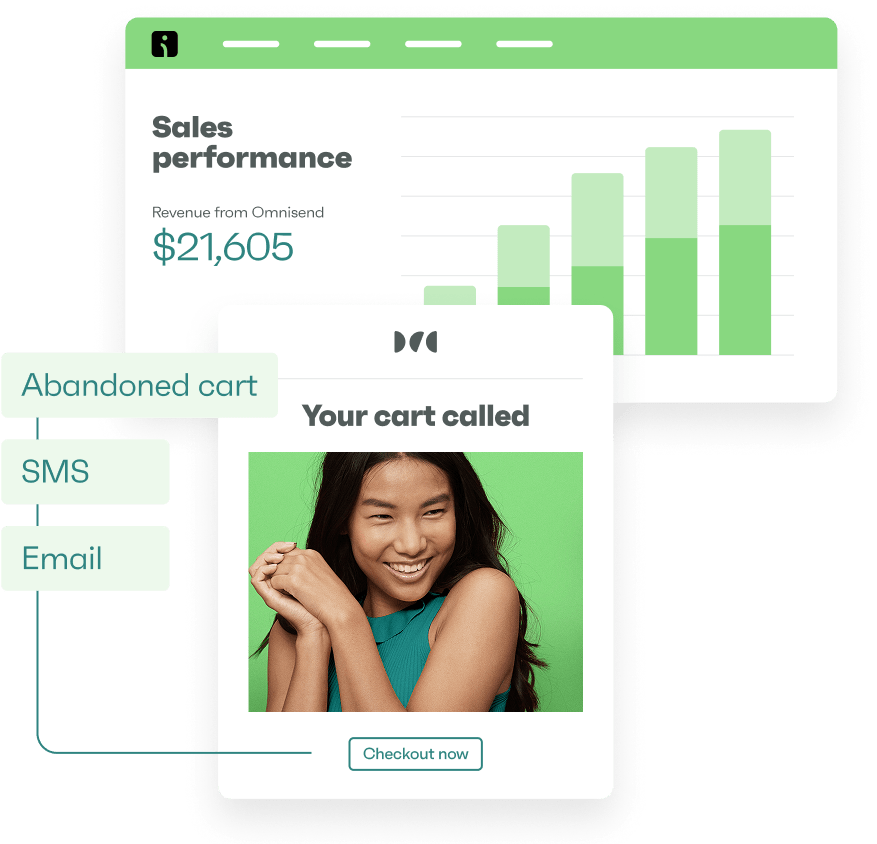Drive sales on autopilot with ecommerce-focused features
See FeaturesIt doesn’t matter who you are or what industry you’re in — mistakes happen. I’ve learned that what matters most in business isn’t avoiding every error because, let’s face it, that’s impossible.
Instead, it’s more about how you respond when things inevitably don’t go according to plan.
With that in mind, one of the most powerful tools in your customer retention arsenal is the apology email. But if you want people to open your email, you need a good subject line for it.
Today, I’ll share some practical strategies for creating high-converting apology email subject lines. You’ll get to see how they work, what to remember when crafting your own, and much more.
Let’s dive in!
The importance of apology emails in business
Before we get too far into it, I think it’s crucial to explain why exactly apology emails are so important in business.
Put plainly, a sincere, well-written email is one of the best ways to win your customers over, even after something has gone wrong. It helps to establish trust and show that you’re listening and want to do everything in your power to make things right.
Conveying that information in your apology email subject line is crucial for getting people to read your message. Studies show that 74% of people will mark an email as spam if the subject line doesn’t resonate with them, so your opening words matter more than ever.
Your emails can resolve specific issues like shipping delays, service disruptions, or website glitches, which means they help to keep everyone on the same page.
Why your apology email subject line matters
Imagine your customer has just experienced an issue with your product or service. They’re frustrated and looking for answers.
As they check their inbox, your apology email pops up. The first thing they’ll see is the apology email subject line. This brief line of text is your first and potentially only chance to get them to click through so you can explain what happened and how you plan to make things right.
Subject lines are a big deal — especially for apology emails. They determine whether your carefully crafted message will even be read. Statistics show that around 50% of emails are opened or deleted based on the subject line, which highlights one of the many reasons why this step is so important.
Here are a couple more things to consider:
Make a good impression
Your apology email subject line sets the tone for the entire interaction. If it comes across as robotic, vague, or dismissive, your email could be ignored or, worse, marked as spam. This could impact your email deliverability rate and make it much harder to connect with new prospects.
Cut through inbox clutter
Over 81% of businesses use email marketing, which means inboxes are busier than ever. To stand out, your subject line must strike the perfect balance between catching the reader’s attention and avoiding clickbait tactics.
A subject line that is too generic risks being overlooked, while one that’s overly dramatic might feel insincere. A well-made subject line will help you cut through all the clutter.
Convey sincerity and empathy
A well-crafted apology subject line demonstrates that you acknowledge the problem, understand its impact, and are committed to making things right.
Customers respond positively when they feel heard. Adding personal touches like their name or referencing the specific issue can make a big difference. In fact, subject lines personalized with a name see 10-14% more opens compared to generic ones.
Set expectations early
An effective subject line also prepares the reader for what you have to say. If you’re owning up to a mistake, for example, they should know that before they click through. When you’re transparent and follow through on your promise, people are more likely to trust and respect your brand. This means there’s a pretty good chance they’ll open future emails!
12 apology email subject line examples
When a problem occurs, the right apology email subject line can make all the difference in regaining customer trust and goodwill. Below are 12 subject lines tailored to common scenarios, with insights into why they work and what you should take away when crafting your own:
General service disruptions or mistakes
These apology email subject lines address broad issues that might have impacted many customers. They aim to convey responsibility and empathy while reassuring the reader.
“We owe you an apology — here’s what happened.”
- Why it works: This subject line is straightforward and transparent. It immediately signals accountability and invites the customer to learn more. It also fosters trust by being honest from the outset.
- What to remember: Customers value honesty. Avoid vague phrasing like “Update inside!” and they’re more likely to read what you have to say.
“Our mistake, your patience deserves better”
- Why it works: By acknowledging the customer’s inconvenience, this line shifts the focus to their experience. It shows humility and empathy while recognizing that the customer’s patience is valuable.
- What to remember: Center your message around your customers and their experience. Phrases like “your patience” demonstrate respect and validate their frustration.
“Oops. Someone hadn’t had their coffee yet this morning”
- Why it works: This subject catches your audience’s attention. The lighthearted tone makes them want to learn more about the mistake.
- What to remember: Only use this one if you’re being playful or talking about something that isn’t that serious. For example, if you’re letting subscribers know your flash sale email went out a bit early.
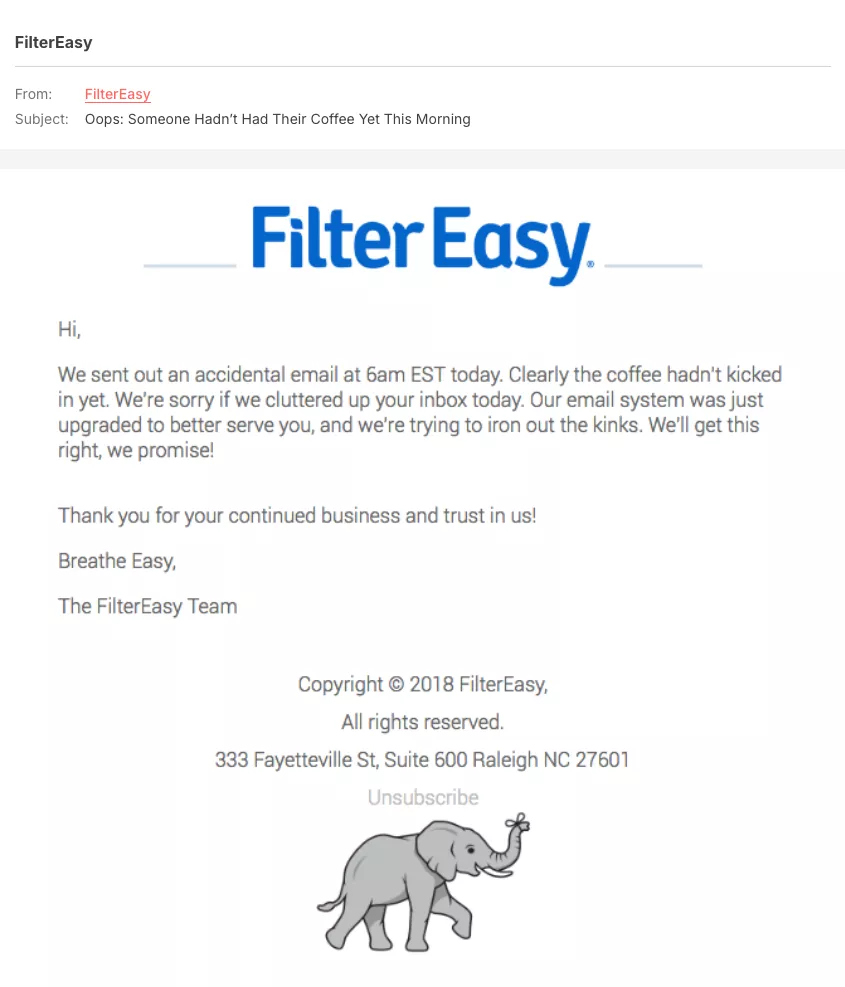
Shipping delays or product issues
When customers are waiting on orders or receive faulty products, these apology email subject lines directly acknowledge the problem while offering solutions.
“We’re sorry for the delay — here’s what we’re doing.”
- Why it works: This line pairs an immediate apology with a promise of action. It reassures your customers that their issues are being taken seriously and that you want to make things right.
- What to remember: Combine regret with action. Apologies without solutions may feel hollow, so include a glimpse of your corrective steps.
“Your order is late — we’re making it right.”
- Why it works: This subject line emphasizes resolution. “Making it right” conveys that your business is focused on repairing the customer’s experience, not just apologizing.
- What to remember: To make this work, use resolution-focused language. It builds confidence and turns a negative into a positive.
“There’s an issue with your (Brand) shipment #(Order number)”
- Why it works: This apology email is straightforward. It lets the customer know who you are and that there is an issue. The odds are that if someone ordered from you recently, they will check this message.
- What to remember: If appropriate, use a warm, conversational tone. It can make your business appear approachable and relatable.
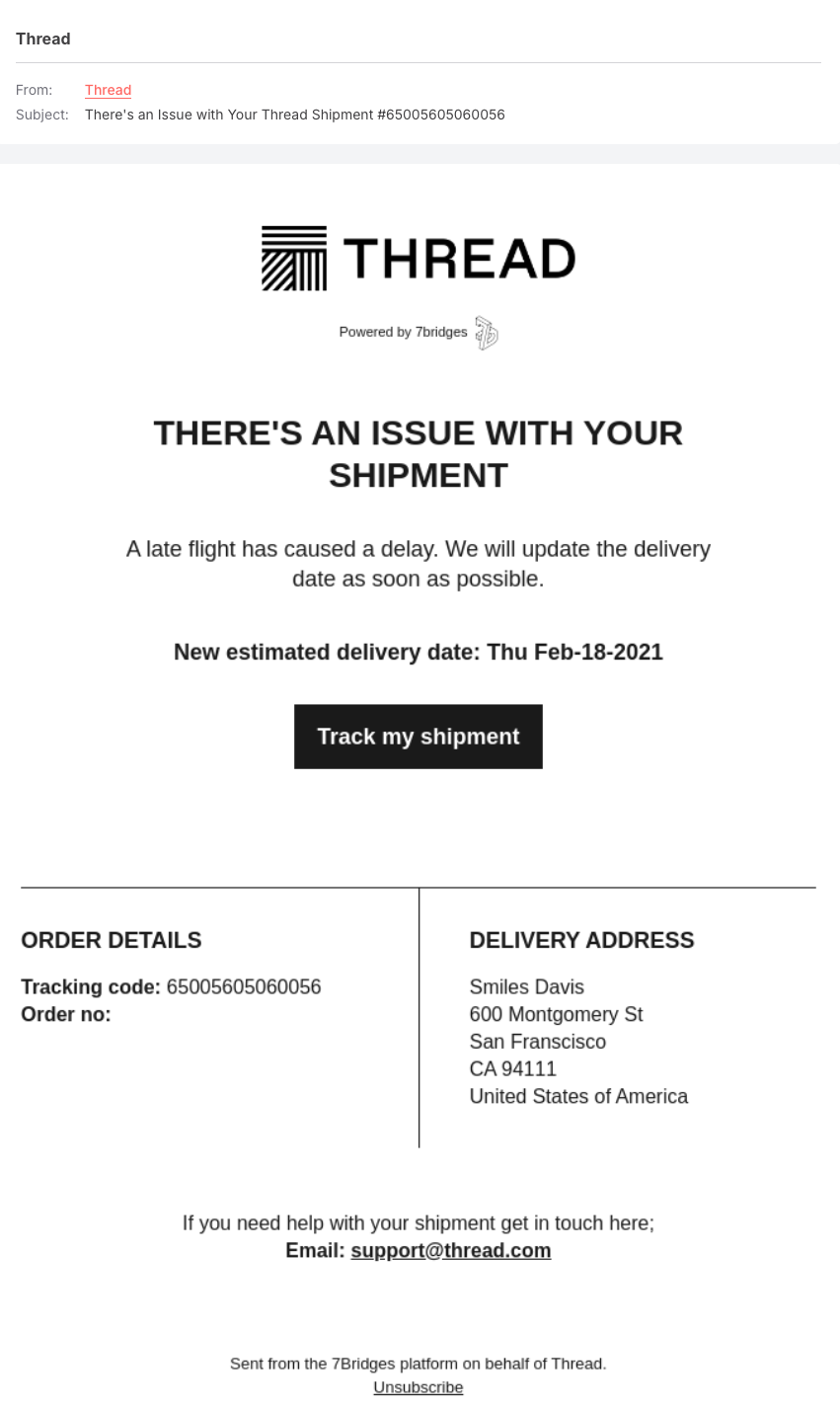
When you’ve dropped the ball
Human errors happen. These apology email subject lines focus on owning up to mistakes and outlining your commitment to improvement.
“Our apologies — we missed the mark”
- Why it works: By admitting the mistake directly, this subject line disarms the customer. It shows vulnerability, which can foster empathy and reduce negative reactions.
- What to remember: Don’t shy away from admitting fault. Phrases like “we missed the mark” show humility and humanize your brand.
“We messed up, and we want to make it right.”
- Why it works: This line combines accountability with a solution-focused approach. It shows that you want to correct your mistake.
- What to remember: Use a conversational tone and make the solution explicit. The focus on “making it right” shows action, not excuses.
“Whoops! We sent you the wrong email. Here’s the right one!”
- Why it works: This subject line shows that you made a mistake and have a solution ready for the reader to see. All they have to do is click your message.
- What to remember: Make sure the new email is responsive, engaging, and offers value to your subscribers. Otherwise they may feel disappointed after opening it.
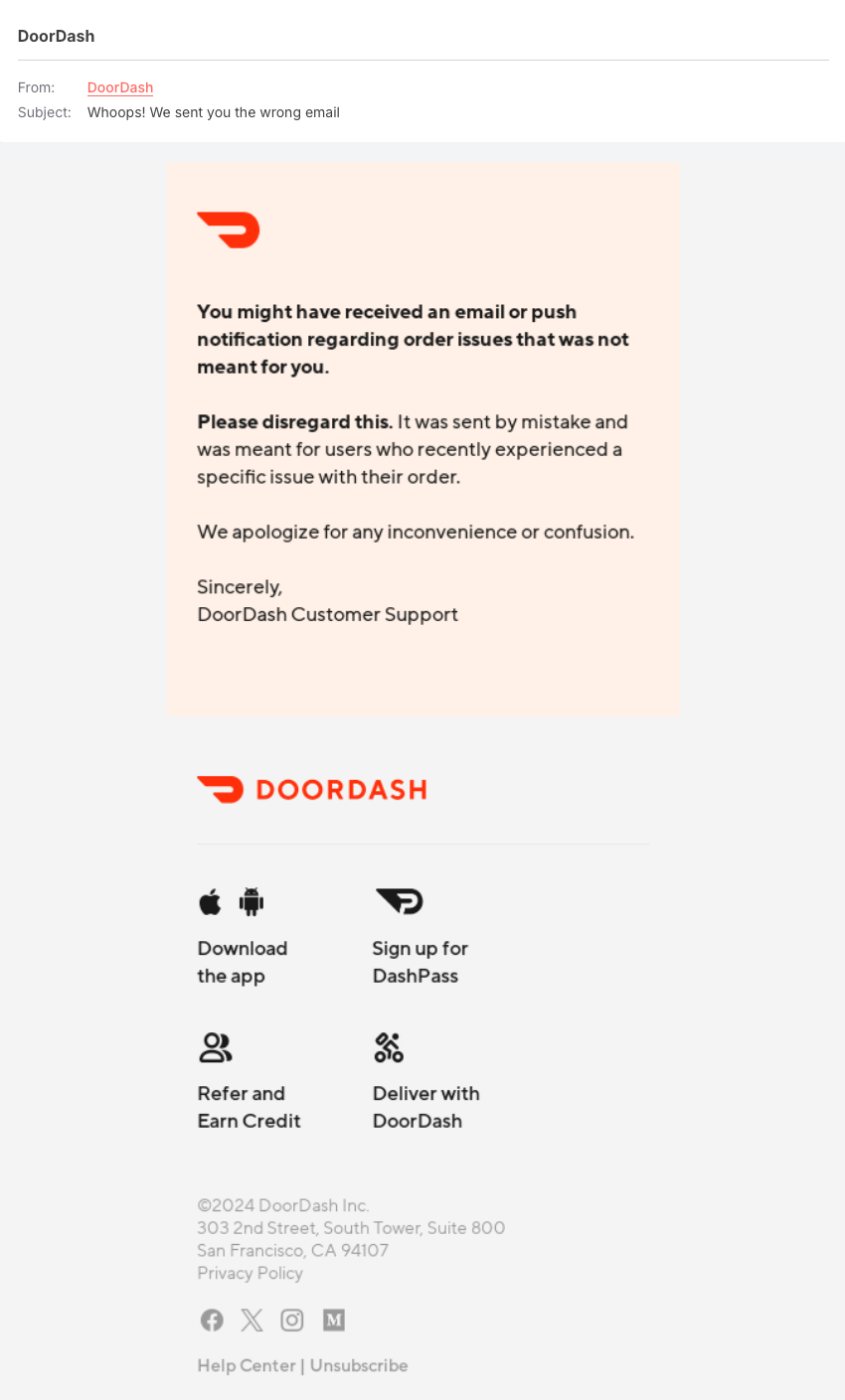
Website or technical glitches
When technical issues disrupt the customer experience, prompt acknowledgment and transparency go a long way toward fixing things.
“Website issue fixed — our apologies for the inconvenience”
- Why it works: This line reassures customers that the problem is resolved while expressing regret for the disruption. It signals closure and progress.
- What to remember: When a technical problem is resolved, lead with reassurance. Customers want to know that the issue is behind them.
“We had a technical glitch — here’s what to know.”
- Why it works: By framing the email as informative, this subject line encourages customers to open it for details. It balances candor with professionalism.
- What to remember: Be candid about the nature of the issue and let people know what to expect so they can take action if needed. Transparency is important and often appreciated.
“Oops, we got a bit excited”
- Why it works: This subject line is a great way to apologize in a light and almost playful way. It’s best used when something insignificant happens and doesn’t take much time to fix.
- What to remember: Keep the same voice throughout your email. This way, readers know what happened but won’t feel confused or concerned about the change in language or tone.
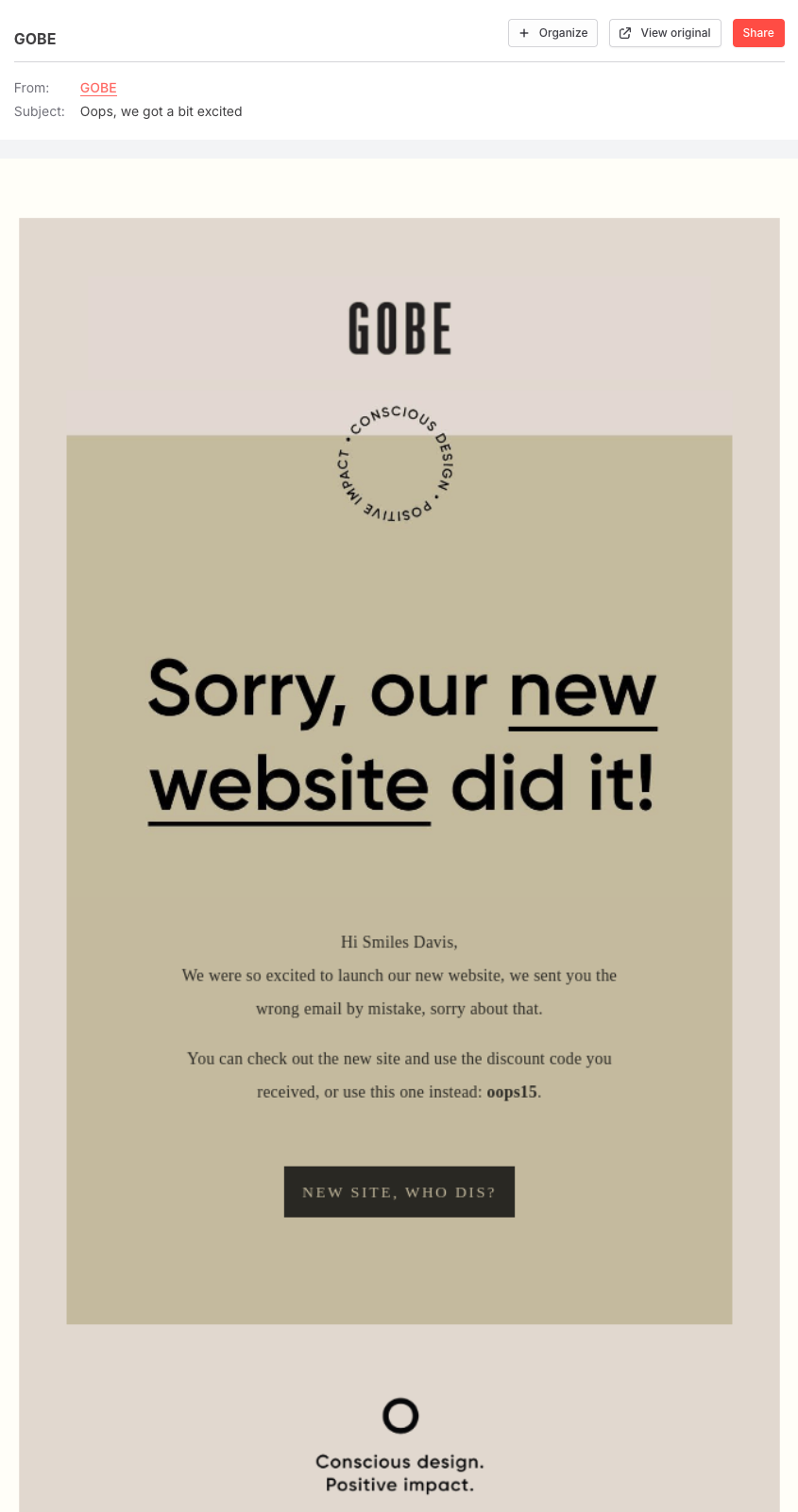
Tips for writing effective apology email subject lines
A great apology email subject should be apologetic, but just as important is to do it in a way that feels genuine, specific, and compelling.
While the examples above inspire, here are tips for creating your own compelling subject lines, expanded with additional insights to help you take your apology emails to the next level:
Keep it concise
Subject lines should be as concise as you can make them. We generally advise getting the most important part of the message out within the first six to eight words since it fits better in the inbox preview on mobile.
Customers are busy and will likely skim through their inboxes quickly, so use every word wisely to convey your apology and intention quickly. Avoid filler words or overly complex phrasing.
A concise subject line also respects your customer’s time and increases the likelihood that they’ll engage with your email instead of skipping over it.
Use the customer’s name
Adding a customer’s name can make your email feel less like a generic apology and more like a direct acknowledgment of their experience, which can help you stand out in a sea of impersonal messages.
Personalization also fosters a sense of connection and shows customers you’re addressing their specific concerns, not just issuing a blanket apology. Here’s something else to consider — four out of five people say they prefer to engage with brands that personalize content and offers.
Be specific
Generic apologies feel insincere and can frustrate customers further. That’s why the more specific you are, the more your customers will feel you’re genuinely addressing their concerns.
I’ve also found that specificity shows that you’ve taken the time to understand the problem, which makes your apology feel intentional and meaningful rather than automated.
Test your subject lines
A/B testing can boost engagement by up to 26%, giving you valuable data on what resonates with your audience.
With that in mind, it’s a good idea to test variations of apology email subject lines for tone, length, and content to see which approach drives the best results. For example, try comparing “We messed up — here’s how we’re fixing it” with “Your patience means a lot — an update from us.” Small changes can have a big impact.
Testing helps you refine your approach and ensures your subject lines are effective at reaching your customers when it matters most.
Turning apologies into opportunities
A well-crafted apology email doesn’t just resolve an issue — it can actually deepen your connection with the customer and improve brand loyalty.
With that in mind, here are more tips to keep in mind that you can use to turn apologies into opportunities to create a positive, memorable customer experience:
Offer incentives
Apologies are more impactful when paired with an action that demonstrates your commitment to making things right. That’s why I suggest offering discounts, free shipping, or account credit to show customers that you value their patience and want to thank them for sticking with you.
It doesn’t take a ton of work, either. For example, adding, “Here’s 15% off your next order as a token of our apology.” can have a massive impact on clicks and customer loyalty.
In my experience, offering incentives is one of the best ways to encourage repeat business and help people accept your apology.
Invite feedback
Encourage customers to share their thoughts by including a link to a survey or a request for a reply. This not only demonstrates that you care about their experience but also provides insights into how your business can improve.
Once the dust has settled, you can look through their feedback and identify patterns, which will help you make their next experience even better.
There’s also the fact that asking for feedback signals that you’re listening and want to help in any way that you can, but they have to tell you what they want first.
Follow up
After resolving the issue, follow up with a thank-you email. You could use this opportunity to add another incentive or simply use it to thank your audience for sticking with you, even when things don’t go according to plan.
A follow-up email shows your customers that you’re invested in their satisfaction beyond the initial apology, leaving them with a positive impression of your brand.
Conclusion
Mistakes are inevitable in business, but they don’t have to be relationship-ending. A well-crafted apology email with a thoughtful subject line can be the difference between losing a customer and winning them back stronger than before.
Focus on sincerity, clarity, and solutions to create subject lines that show your customers you want to make the best experience possible. Ultimately, this will lead to more engagement and help you improve your business over time.
The only thing left to do is to get out there and start testing these emails for yourself. I’m confident that if you’re patient and persistent, you can create an apology email that actually builds brand loyalty and boosts customer satisfaction.
Quick sign up | No credit card required
Author bio

Syed Balkhi is the founder of WPBeginner, the largest free WordPress resource site. With over 10 years of experience, he’s the leading WordPress expert in the industry. You can learn more about Syed and his portfolio of companies by following him on his social media networks.
TABLE OF CONTENTS
TABLE OF CONTENTS


No fluff, no spam, no corporate filler. Just a friendly letter, twice a month.

 OFFER
OFFER







